Alpine environments are among the most understudied ecosystems in the world. Due to their inaccessibility, there is a perception that these habitats are protected from human impacts. It is also widely believed that alpine habitats are little more than unproductive areas of “rock and ice” with low biodiversity and minor conservation value.
Due to the relatively severe environmental conditions encountered, alpine systems generally do have lower species diversity than many lower elevation ecosystems. For example, only four or five species of birds reside in alpine habitats year-round. However, during the short but productive summers, about two dozen “alpine-tolerant” species that are usually found in lower elevations will breed in the alpine. In addition, many migratory birds stop-over and forage during late summer and autumn. At this time when resources are plentiful, other bird species (altitudinal migrants) will move into the alpine from lower elevations. As forest habitat decreases in North America, the alpine and subalpine may become important refuges for some populations.
From research and literature surveys we have found a total of 239 bird species that have been observed in high-elevation habitats in North America – a surprising number for such “unproductive” landscapes! Check out the summaries and checklists on our downloads page to get more details on avian use of alpine habitats in North America and British Columbia.
Other alpine-related research at the Centre for Alpine Studies includes an inventory project on Vancouver Island White-tailed Ptarmigan, a survey of alpine use by migrating birds, and songbird biology and life history. For more information, download a copy of Kathy Martin’s book chapter, “Wildlife in Alpine and Sub-alpine Habitats”, published in 2001.
Photos
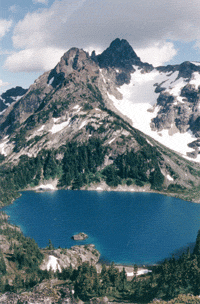


photo by Steve Ogle
Alpine habitats are naturally fragmented patches. In some areas, alpine habitat is extensive.

photo by Steve Ogle
In other areas, alpine occurs in small, isolated patches, surrounded by low elevation habitat. Here, it is easy to see that small changes in climate may make a big difference to the extent of alpine habitat.
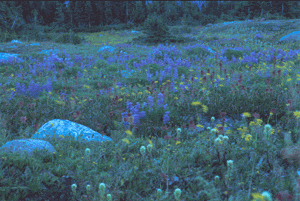
photo by Steve Ogle
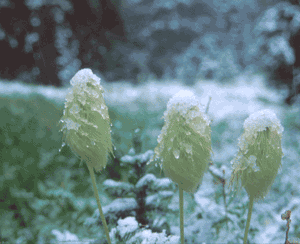
anemone, Manning Park
photo by Steve Ogle
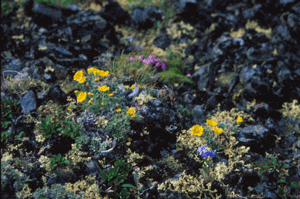
photo by Steve Ogle
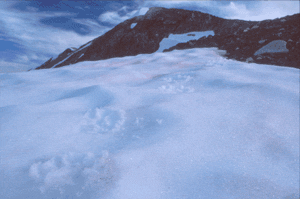
wolverine prints
photo by Steve Ogle